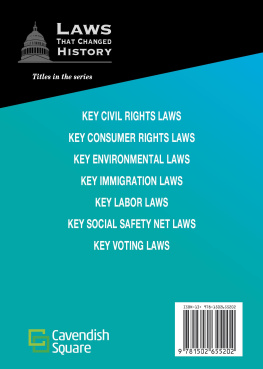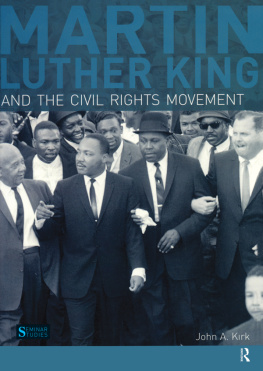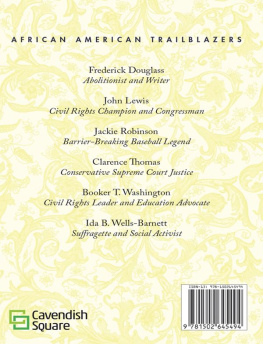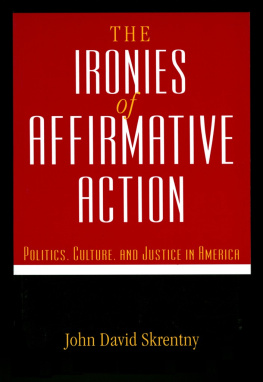Copyright 2014 by Princeton University Press
Published by Princeton University Press, 41 William Street, Princeton, New Jersey 08540
In the United Kingdom: Princeton University Press, 6 Oxford Street, Woodstock, Oxfordshire OX20 1TW
press.princeton.edu
All Rights Reserved
Second printing, and first paperback printing, 2016
Paper ISBN: 978-0-691-16812-8
The Library of Congress has cataloged the cloth edition of this book as follows:
Skrentny, John David.
After civil rights : racial realism in the new American workplace / John D. Skrentny.
pages cm
Includes bibliographical references and index.
ISBN 978-0-691-15996-6 (hardcover : alk. paper) 1. Discrimination in employmentUnited States. 2. Race discriminationUnited States. 3. Civil serviceUnited States.
4. Civil rightsUnited States. I. Title.
HD4903.5.U58S5697 2013
331.1330973dc23
2013013184
British Library Cataloging-in-Publication Data is available
This book has been composed in Fairfield LT Std
Printed on acid-free paper.
Printed in the United States of America
PREFACE
A fter spending several years researching and writing about the historical development of minority rights legislation in the United States, I learned something new. I learned that not everyone was as passionate about the history of American policy as I was. It turned out that many people were more interested in what was happening now, in the contemporary United States, than what had happened in the past. They wanted to know more about where we were going than about how we arrived at where we were.
Eventually I came to share their interest. I had studied the history of affirmative action in employment for African-Americans in my first book, which focused on the years between 1965 and 1975. In my second, I sought to show how other groups won new rights during the same period, including nonblack racial minorities, women, immigrants, the disabled, and others. It makes sense now to write a third book to bring the story of minority rights development up to date, at least as it regards the important topic of employment, and as it regards people whom employers tend to categorize on the basis of their race, national origin, or immigrant status.
More specifically, the purpose of this book is, first, to reveal changes that are going on in employment practices across a broad spectrum of job sectors as regards race. I call this management strategy racial realism. It refers to employer perceptions that workers vary by race in their ability to do certain jobs and contribute to organizational effectiveness, and/or in the kinds of signals their racial backgrounds send to customers and citizens. Though racial realism benefits whites, hardly anyone openly advocates for employers to manage their workplaces in ways that leverage whiteness. The racial realism that employers, advocates, activists, and political leaders regularly talk about is the kind that benefits nonwhites.
A second goal of this book is to show how these employment practices are or (mostly) are not authorized by law, and to point some ways toward reform. I wish to show that despite the partisan nature of so many policy debates in America, these changes are not partisan, and that in words and actions, both political parties have shown support for them. In some small way, I hope also that by calling attention to these new realities, the book will encourage advocates to take true ownership of themto acknowledge that they might claim to support color-blind classical liberalism in some contexts, but they also support racial realism, and to acknowledge that racial realism has downsides as well as upsides. Only then can we ensure that employment practices are in line with the consensus value of equal opportunity.
Writing a book about what is happening now in American employment and law presents several challenges to someone used to writing about the past. First, now is obviously a moving target, requiring constant updates. Second, an early strategyinterviewing employers about their beliefs and practiceshad to be abandoned because too many employers were either unwilling to talk openly and directly about these topics or unwilling to talk at all. Their reluctance is almost certainly related to a major point of the bookthat racial realism is still far away from civil rights law as currently interpreted. Third, the effort to be comprehensive in mapping what was going on now and also policy-oriented means that a rigorous causal argument is not possible. While the introductory chapter presents a causal story to account for the rise of racial realism in the last few decades, and while I believe that story to be accurate, the book does not attempt to rigorously test that argument.
This book took a very long time to write. Describing it as a book about race, law, and employment in America, as I often did, perhaps makes it sound narrow in its focus. In fact, it required learning vast new literatures, because in each section I sought to show how employers and advocates think of and use racial realism, to give some sense of how widespread the phenomenon is, to present material on whether social science research supports employers racial realism, and then to assess what the law has to say about it. It is not easy to be expert in all of these literatures, but I did my best to present the state of knowledge in each of them.
During this long process, I benefited from the wise counsel of many, many scholars and research assistants. I apologize to those whom I neglect to mention below. The basic idea for the book was developed in conversations with Paul Frymer, perhaps the only person in America who is as fascinated with Section 703(e) of Title VII of the Civil Rights Act of 1964 as I am. We presented some early material at conferences at Harvard Law School and the University of Connecticut Law School, and published a piece together in the Connecticut Law Review. I also benefited from audience comments when I presented various pieces of this research before scholars at meetings of the American Sociological Association, the Association for the Study of Law, Culture and the Humanities, and the Association of American Law Schools, and also at seminars, conferences, and workshops at many great institutions, including the Indiana University Law School; the American Political Development Seminar at the Miller Center of Public Affairs, University of Virginia; the Center for the Study of Law and Society Seminar at the University of California-Berkeley; the Legal Studies Seminar at Brown University; the Program in Law and Public Affairs at Princeton University; the Department of Political Science at Yale University; the Russell Sage Foundation; the Economic Sociology Workshop at Harvard University; the Stanford Workshop on Migration, Ethnicity, Race and Nation; the Conference on Racing the Republic: Ethnicity and Inequality in France, in American and World Perspective at the University of California-Berkeley; the Conference on Fractures: Defining and Redefining the Twentieth-Century United States at the University of Pennsylvania; and the Borders and Boundaries Conference at the Interdisciplinary Research Institute for Social Sciences, cole des hautes tudes en sciences sociales in Paris.









